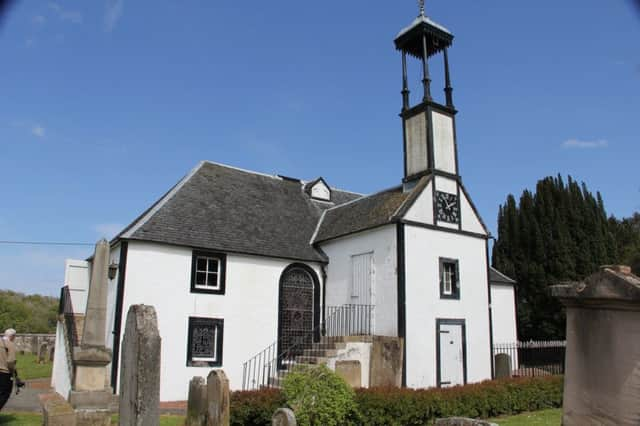Nostalgia: Why Winston Churchill came to worship in a wee village kirk...


However, looks can be deceptive and, in terms of the part it has played in Scotland’s history, ‘wee’ Dalserf punches way above its weight.
And that part has been a very long one, thought to stretch back to the very earliest days of Christianity in Scotland, its very name being linked to St Serf, one of the faith’s pioneers in this country.
Advertisement
Hide AdAdvertisement
Hide AdEvidence of a Norman connection came in the discovery of a rare (for our area) hogback tomb in the kirkyard, This was a form of burial far more associated with the Normans than the Scots and may be rare surviving evidence that one of the earliest recorded ‘lairds’ of the village were the Comyns.
This clan wielded enormous influence in Scotland under the patronage of King David 1, the monarch who granted Lanark its Royal Burgh status.
There were less happy times ahead for the Comyns, especially in 1244 when they were forced to swear allegiance to the English King Henry III. However, this won them being granted the ‘devolved’ political leadership of Scotland, a position of power they held for a long period before their eclipse and the handing over of their Dalserf and surrounding lands to the then more-favoured Hamilton dynasty.
Eventually, the Hamilton sway over the village also came to an end and, as the 20th century appoached, the Newlands at their mighty, nearby Mauldslie Castle were regarded as the premier family of the area.
Advertisement
Hide AdAdvertisement
Hide AdAmong the local gentry were their friends the Hoziers of which a Victorian era daughter, Clementine, married none other than Sir Winston Churchill. It is reputed that, more than once while staying at Mauldslie, Sir Winston and Clementine worshipped at Dalserf’s landmark wee church.
This, regarded by some as one of the most charming kirks in all the land, was built in 1655, almost certainly on the site of far earlier places of worship.
There is a memorial to perhaps its most famous minister, the Rev. John MacMillan, who was, after his firebrand Covenanting years, ‘put out to grass’ at Dalserf.
The village’s high days were probably in the late 18th century where a population of around a thousand – ten times today’s – was supported by a very diverse economy indeed!
Advertisement
Hide AdAdvertisement
Hide AdMany worked in the mining and transportation of coal in the then thiving riverside pits but the surrounding countryside still produced over 40 tons of fruit a year at one point. Dalserf also had a strong weaving tradition.
Largely because of the coal industry Dalserf had, for a long while, it’s ‘own’ railway station.
However, its name of ‘Dalserf Station’ was a bit of a local ‘in joke’ as it was located so far up a long hill from the village itself that many of the miners claimed they were exhausted before even boarding a train to their pit to start their shift.
Still, when the station finally closed in the 1950s – after a reprieve following wartime closure – it was sorely missed by one and all.
Yes, these days Dalserf might be a tranquil place but it boasts a heritage – and an absolutely beautiful kirk – that many of Lanarkshire’s major towns would kill for!